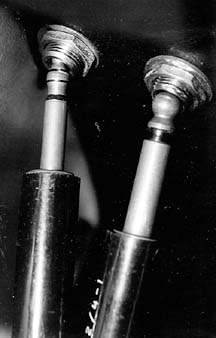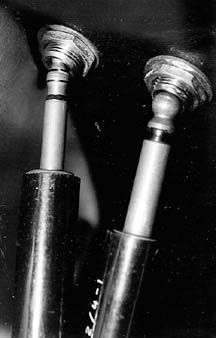
Snap crackle and pop. In this case, it isn’t a breakfast food, but the distinctive electrical noise you hear in your headset. In the old days, before we knew how bad cabin noise was for your hearing, we didnt notice the crackling from the avionics over the background din.
But now, thanks to the wonders of noise-canceling headsets, we can hear the proverbial pin drop and we detect every burble and burp. In some airplanes, the static is almost unbearable while others have none.
The good news is electrical noise can be completely eliminated. The bad news is that it can be a costly exercise. Plus, there are no guarantees that the action you take to reduce static will be effective. You can have the quietest Cessna 172 around, but the expense to get it that way may be enormous.
So, at some point, you may decide that the sound in your headset is lessannoying than the money you’ll spend to eliminate it. Still, there are simple things that can help reduce excess noise in your headset.
Audio Static
The root cause of headset noise is electrical impulses traveling throughout the airplane and finding their way into the audio system. They can get in anywhere from the main power bus to the cord that runs between the panel and your head. Or anywhere in between. Electrical energy gets loose and appears as a valid signal to the avionics or audio signal and is processed just like the radio conversation. Thats what makes it so hard to sort out; noise is electronically almost indistinguishable from the real thing. Yet electrical noise does have characteristics that make it possible to through the process of elimination narrow down the list of sources to something manageable through the process of elimination.
Often , the simplest and most obvious noise source is close at hand in your headset itself. Probably the most common source of noise is the plug on the headset cord. These get tarnished and dirty and the result is an unbearable crunching noise, usually when the cord is moved.
Copper plugs, like those favored by David Clark, tend to get tarnished more easily than the plated type used by other manufacturers. But 10 seconds with a crocus cloth will make them good as new. Its an easy place to start.
Because were lazy and yank the headset out by the wires, we can introduce another noisemaker: A bad connection. These will sound much like dirty connectors, with one important difference. Move the cord just right and the noise, as we’ll as all audio, goes away.
Sometimes it goes away for good. This will require a trip to a technical guy, somebody who is good with a soldering iron or has the patience and tools necessary to make a cord repair. The avionics shop may seem like a good place to start, but theyll charge you the same per hour to fix the headset as a navcomm. After all, youre using a trained and talented technician to fix a simple problem.
The customer service at David Clark is so good that I always advise people to send in their mangled headsets for a next-to-nothing refurbishment. Not using David Clark? Then you need to take better care of the headset and expect to pay to get them fixed. No matter who makes the headset, though, the most expedient place to get it fixed is the manufacturer. Modern headsets have molded-on plugs. These are more rugged and reliable than an assembled connector, until the moment they break. Theyre harder to fix, because you cant open the plug and tighten everything up.
You need to cut off the plug and attach new plugs. The headphone side is a standard 1/4-inch phono jack (stereo or mono) but the 3/16-inch aircraft microphone is not found at Radio Shack and will have to be ordered from the manufacturer or an electronic specialty house.
Besides the plug side, headset noise can come from broken or loose wires at the earpieces and crossover wires, all vulnerable to mishandling or flightcase abuse. The best way to troubleshoot a headset is by wiggling the wires and connectors. A look under the panel is a good idea, too, since wiring from the audio panel at the jack can come loose or the jack itself can loosen, creating a weak ground and introducing a noisy connection. Wiggling it will reveal the problem.
Audio Panels
Since all of the radio audio goes into and out of the audio panel, it can be a source of noise, too. Without considering component failures inside the audio panel itself, loose or dirty contacts are a common source of noise. Sometimes, merely tightening the audio panels mounting screw will improve things. (Dont overdo it or you’ll be in for a more expensive solution to your noise problem.
Removing the audio panel and cleaning the contacts with contact cleaner may also eliminate some noise. Even if it doesnt, its good preventative maintenance.
Magnetos and alternators are another common source of audio noise. Magneto and ignition pops usually change with engine speed so if the popping increases with RPMs, check mags and ignition leads. When ignition leads are replaced, make sure the correct spec is used, otherwise you could be introducing noise not present before. Arcing in magneto points will also show up as pops in your headset. Have the mag checked and/or overhauled.
Alternator noise can be diagnosed by turning the alternator off while the engine is running-either via a dedicated or split switch or by pulling the alternator field circuit breaker. If the noise dies, you’ll know what to tell the shop. New capacitors or inline noise filters may help.
Last, strobe noise. The characteristic whine is often due to poor shielding, bad grounds or an ancient power supply. Sometimes these are fixable, sometimes not. In any case, if switching off the strobes cures the problem, let your shop know and be prepared to spend more than you might have thought to fix the problem.
-by Gary Picou


